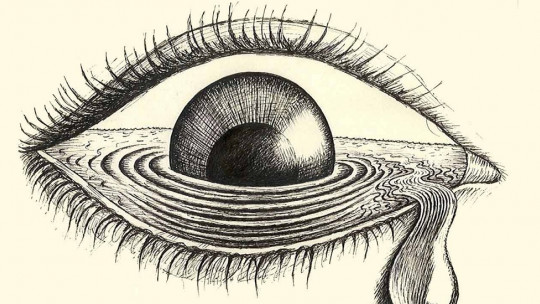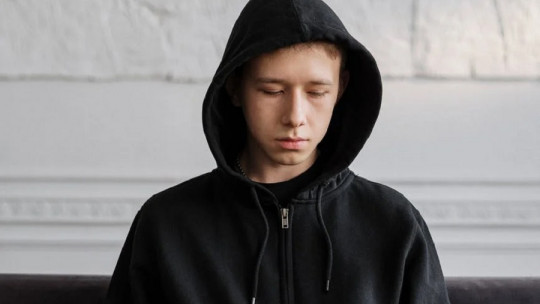
Despite being a phenomenon of tremendous magnitude, suicide is not talked about. According to the World Health Organization, every 40 seconds a person ends up taking their own life, that is, around 703,000 people a year. The number is even greater if we think about the hundreds of thousands of tragedies that this entails, both for those who commit suicide and for their circle of family and friends. Given such figures, it is understandable that many people close to someone vulnerable consider that calling for silence is a good preventive strategy. However, by avoiding talking about it for fear of “provoking ideas,” they are actually guiding their behavior by a myth about suicide, which only makes it a little more invisible.
This is common for parents who have heard their teenage children threaten to kill themselves. Their situation is also complex since, many times, despite having good intentions, they do not understand what suffering their child finds intolerable, or they do not know how they could help him. But the statistics, rather than scaring us, should put us on alert to develop preventive strategies. That is why in this article we will describe the basic aspects about suicide that people close to an adolescent at risk should know, and the most relevant suicide prevention strategies in adolescents to consider.
Suicide in adolescence
Although cases of suicide in adolescents are increasing—according to UNICEF, they have tripled in the last 30 years—this does not mean that it is a new, generational or purely epochal problem. We bring this back since teens who threaten to take their own lives don’t always say it lightly. And that’s what to say or think “I want to die” It does not constitute a new term that is part of the vocabulary of today’s young people, but rather it could be an authentic request for help. This is why parents should aim to be as validating as possible with their child’s suffering, even without understanding the underlying reasons for that pain, even without knowing how to act to help them.
Does this mean that all teenagers who have said or thought phrases like this have wanted to commit suicide? Not at all. Most don’t, and The fact of having had the occasional thought of wanting to end one’s life does not represent, according to the WHO, an abnormal event. Nor is it an argument for being careless: nine out of ten people who end up taking their own lives have previously explicitly notified their loved ones, so it is always important, as parents or friends of a person at risk, to be willing to listen and talk. of the subject, even not knowing how to prevent it.
Why do some people consider suicide?
In order to understand suicide prevention strategies in adolescence, it is important for parents and close friends to know, broadly speaking, why a young person may consider suicide as an option. We know that suicide is a multi-causal phenomenon, which is why it is not easy to establish a univocal cause for it. The life of an adolescent can be crossed by an endless number of problems, some milder and others serious, such as remaining in violent or abusive social ties, being victims of bullying or bullying, or having suffered sexual abuse. All of these could constitute risk factors linked to suicide.
It is normal and expected that these situations trigger an intense emotional response in the adolescent, whether it be fear, anger, anxiety or sadness. Emotions have an adaptive function, they have had a purpose at an evolutionary level and they operate as informants so that we give appropriate responses to the environment we face. The problem is that, many times, the emotions that an adolescent experiences in the face of such events are so intense that they cannot regulate them, and therefore, they carry out specific behaviors that in the short term can be effective in alleviating the pain—such as consuming substances, threatening suicide or self-harm—but in the medium and long term they generate negative consequences for their goals.
In general terms, suicidal behaviors are not only impulse control problems (since many times there is a drop that overflows the glass in that emotional sea that ends up triggering an attempt to take one’s life), but, above all, they have the function of regulating intense emotions in the short term. The person who chooses to commit suicide does not do so because he does not wish to live any longer, even if he declares it so, but because he does not wish to live any longer. with that intense pain that no one seems to understand. People who consider suicide do so because they believe they do not have better abilities to alleviate that suffering. Therefore, psychological treatments for patients with suicidal behavior aim to acquire the necessary tools to regulate and act in different ways in the face of such pain, while finding goals or values that guide a life that is worth living.
Suicide prevention strategies in adolescence
This is an extremely delicate issue, in which we must act with the greatest responsibility and effectiveness possible. As close people, it is not necessary to thoroughly understand suicidal behavior in order to respond preventively to the situation, since to do so There are mental health professionals trained in very effective treatments to serve patients or consultants with this type of tendencies, such as cognitive-behavioral therapy (CBT) or dialectical-behavioral therapy (DBT), among others with strong scientific support. This does not mean that from the position of a family member or friend nothing can be done to help, quite the opposite. The support network is vitally important to reverse this situation. The strategies that close people can put into practice when faced with a risk situation are the following:
1. Validate the adolescent’s suffering
This will make you feel that your pain, whatever it may be, is acceptable and has a meaning of existence. You should never tell a person at risk that their problem it’s not that big of a deal either he’ll get over it. Although there are good intentions behind these phrases, they do not recognize or empathize with the adolescent’s suffering, which could aggravate the problem. Instead, It is better to point out that the pain you feel is valid that having those unpleasant emotions and thoughts does not mean that you are going crazy, but rather they are signs that you are going through a difficult time and it is necessary to ask for professional help.
2. Encourage direct communication
Ask the adolescent directly if they have ever considered or are considering suicide. Far from encouraging such behavior, allowing the adolescent to talk about his suffering could be the first step towards prevention.
3. Emphasize the urgency of the consultation with a psychotherapist and/or psychiatrist
If it is detected that a young person is at risk of committing suicide, It is essential that you receive care from a therapist in an office, health center or hospital as soon as possible.
4. Accompany the process
The goal of friends and family is for the adolescent to reach the hands of a professional. He or she may resist this, so the best way to help is to restrain the boy or girl while providing access to the space in which he or she will be treated in order to act as quickly as possible. This could include calling the professional, finding out their office hours, or being willing to work around family routines to ensure the teen receives appropriate treatment.








